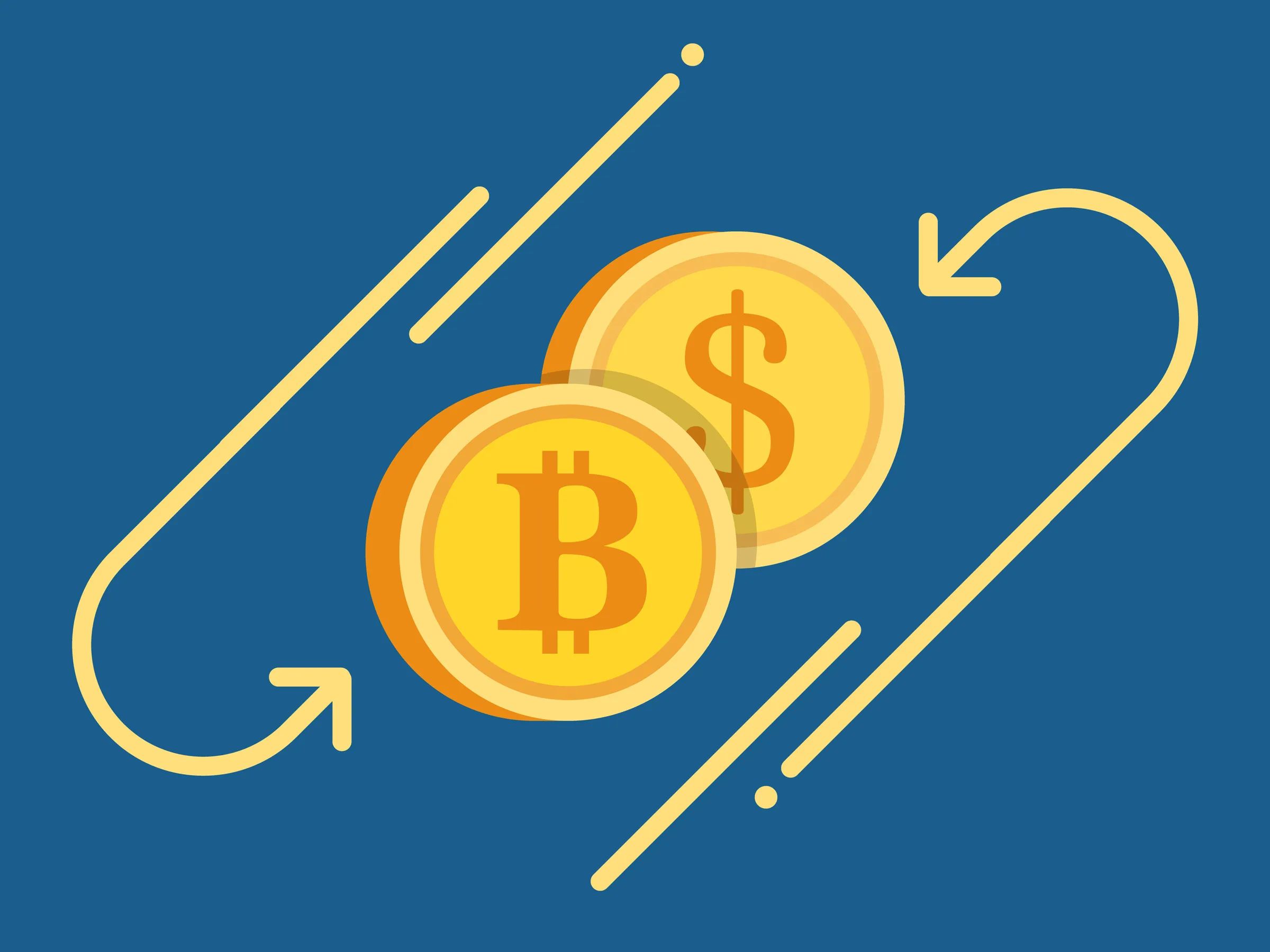Introduction
The Lightning Network is a revolutionary technology that has emerged in the field of blockchain and cryptocurrencies. With the rising popularity of cryptocurrencies like Bitcoin, a need for a scalable and efficient payment solution became apparent. Enter the Lightning Network, a protocol that aims to address the scalability and transaction speed limitations of the blockchain.
This innovative network builds upon the underlying blockchain technology by creating a second layer network that operates off-chain. By doing so, it enables faster and cheaper transactions while still maintaining the security and decentralization features of the blockchain. It offers a promising solution to the growing scalability issues faced by cryptocurrencies, allowing for a higher volume of transactions to be processed without congesting the main blockchain.
The Lightning Network holds great potential not just for cryptocurrencies, but also for various industries and applications. It opens up new possibilities and use cases by enabling microtransactions, facilitating instant payments, and improving overall usability and accessibility of cryptocurrencies.
In this article, we will delve into the concept of the Lightning Network, explore how it works, and examine its benefits and limitations. We will also discuss some practical use cases that highlight the potential of this technology. So, let’s dive in and unravel the power of the Lightning Network.
What is Lightning Network?
The Lightning Network is a peer-to-peer protocol built on top of a blockchain network, such as Bitcoin. It is designed to address the scalability issues of traditional blockchain systems by enabling faster and cheaper transactions. The primary goal of the Lightning Network is to facilitate off-chain transactions between users, while still ensuring the security and trustlessness provided by the underlying blockchain.
At its core, the Lightning Network is a network of payment channels created between participants. These payment channels act as off-chain channels, where users can conduct multiple transactions without each one being recorded on the blockchain. Instead, only the opening and closing transactions of the channel are recorded on the blockchain.
By utilizing these payment channels, the Lightning Network allows for instantaneous and low-cost transactions. It achieves this by leveraging the concept of smart contracts, which are self-executing agreements between parties. These smart contracts enable users to create payment channels and establish the rules for transferring funds between each other.
When two parties open a payment channel, they commit a certain amount of cryptocurrency to that channel. This creates a settlement balance that can be used for transactions within the channel. These off-chain transactions occur instantly and are only limited by the speed of internet connectivity. As a result, the Lightning Network can process a significantly higher number of transactions per second compared to the main blockchain.
Moreover, the Lightning Network introduces the concept of routing, which allows users to send payments to other users without the need for a direct payment channel between them. This is achieved by utilizing the existing payment channels and finding a path through which the funds can flow. This allows for greater accessibility and connectivity within the Lightning Network.
Overall, the Lightning Network is a promising solution that aims to improve the scalability and efficiency of blockchain-based transactions. It brings forth a new layer of payment channels and smart contracts that enable faster, cheaper, and more scalable transactions for cryptocurrency users. In the following sections, we will explore how the Lightning Network operates and delve into its various benefits and limitations.
How does Lightning Network work?
The Lightning Network operates by utilizing a network of payment channels, which are established between participants on the blockchain network. These payment channels allow for off-chain transactions, which are faster and cheaper compared to on-chain transactions. Let’s dive into the key elements and steps involved in the operation of the Lightning Network.
Opening a Payment Channel: To start using the Lightning Network, two participants need to open a payment channel between them. This involves creating a multi-signature transaction on the blockchain, where both parties commit a certain amount of cryptocurrency to the channel. This opening transaction is recorded on the blockchain, and the channel is established.
Conducting Transactions: Once the payment channel is open, the participants can conduct multiple transactions between themselves off-chain. Each transaction is signed by both parties and is valid as long as the total amount of funds transferred in that transaction does not exceed the initial channel balance. These off-chain transactions occur instantly and do not require confirmation from the underlying blockchain.
Updating the Channel Balance: As users continue to conduct transactions within the payment channel, the channel balance may change. To reflect these changes, the participants can create new versions of the transaction, which update the balance in favor of one party or the other. These updated transactions are known as commitment transactions.
Closing the Channel: When the participants are ready to close the payment channel, they can do so by creating a closing transaction on the blockchain. This closing transaction includes the final distribution of funds between the participants based on the latest channel balance. Once this transaction is confirmed on the blockchain, the payment channel is officially closed.
Routing Payments: In addition to conducting transactions within a payment channel, the Lightning Network allows users to send payments to other users by utilizing the existing payment channels in the network. This is achieved through a process called routing. The network finds a path through the payment channels, starting from the sender and ending at the recipient, to transfer the funds. Each channel on the path deducts the designated payment amount, ensuring that the payment reaches its destination.
By utilizing these key components, such as opening and closing channels, conducting off-chain transactions, and routing payments, the Lightning Network enables fast and scalable transactions on top of the blockchain. This second layer solution provides a more efficient alternative to on-chain transactions, making it ideal for micropayments and everyday transactions.
Benefits of Lightning Network
The Lightning Network brings numerous benefits to the world of cryptocurrencies and blockchain technology. By introducing a second layer solution, it addresses the scalability and transaction speed issues faced by traditional blockchain networks. Here are some key benefits of the Lightning Network:
1. Scalability: One of the major advantages of the Lightning Network is its scalability. By enabling off-chain transactions and payment channels, it significantly reduces the load on the main blockchain network. This allows for a higher volume of transactions to be processed, making cryptocurrencies more practical for everyday use and mass adoption.
2. Speed: Transactions conducted through the Lightning Network are almost instantaneous. Since the transactions occur off-chain, they do not need to wait for network confirmations. This results in near-instantaneous payments, making it suitable for microtransactions and improving the overall user experience.
3. Cost Efficiency: On-chain transactions in traditional blockchain systems can be costly due to transaction fees and network congestion. With the Lightning Network, off-chain transactions incur minimal fees since they do not require network confirmations. This cost-efficiency makes it viable for small-value transactions and microtransactions, which were previously uneconomical.
4. Privacy: The Lightning Network offers enhanced privacy compared to on-chain transactions. Since most transactions occur off-chain and are not recorded on the main blockchain, the details of these transactions remain private. This increased privacy makes the Lightning Network an attractive option for users who value anonymity.
5. Micropayments: The Lightning Network is particularly well-suited for micropayments, which are transactions involving very small amounts of money. Traditional blockchain networks struggle with micropayments due to high transaction fees and processing time. With the Lightning Network, micropayments become feasible and affordable, opening up new possibilities for content creators, online services, and various other industries.
6. Enhanced User Experience: The Lightning Network improves the overall user experience by offering fast, low-cost transactions. This makes cryptocurrencies more convenient and usable for day-to-day transactions. Additionally, the routing feature allows users to send payments to other users even if they don’t have a direct payment channel, enhancing the connectivity and accessibility of the network.
In summary, the Lightning Network brings multiple benefits to the world of cryptocurrencies and blockchain technology. It addresses scalability issues, enables fast and affordable transactions, enhances privacy, supports micropayments, and improves the overall user experience. These advantages make it a promising technology with the potential to revolutionize the way we use and interact with cryptocurrencies.
Limitations of Lightning Network
While the Lightning Network offers numerous benefits, it also has certain limitations that need to be acknowledged. These limitations include:
1. Network Complexity: The Lightning Network introduces additional complexity compared to traditional blockchain transactions. Setting up and maintaining payment channels require technical knowledge and user engagement. This could deter casual users who are looking for a simple and user-friendly payment solution.
2. Channel Liquidity: For the Lightning Network to operate efficiently, payment channels need to have sufficient liquidity. If a channel runs out of funds, additional transactions cannot be carried out, making the channel temporarily unavailable. Ensuring channel liquidity across the network can be a challenge and may require regular rebalancing of funds.
3. Centralization Risks: While the Lightning Network aims to provide a decentralized payment solution, the network’s topology can result in centralization risks. Larger nodes and channels may attract more transaction volume, resulting in a concentration of power and influence within the network. Efforts must be made to maintain a healthy and decentralized network architecture to mitigate these concerns.
4. Security Concerns: The Lightning Network relies on the security of the underlying blockchain. If a malicious actor gains control of a payment channel, they can potentially compromise the funds within that channel. While the probability of such attacks is relatively low, it is essential to ensure proper security measures are in place to protect the funds stored in payment channels.
5. Routing Complexity: Routing payments through the Lightning Network can be challenging, especially as the network grows in size. Finding a suitable path for the payment to reach its destination may involve multiple hops through different payment channels. This complexity can increase the probability of routing failures or delays in payment delivery.
6. Compatibility: The Lightning Network is currently predominantly built on top of the Bitcoin blockchain. While efforts are underway to expand its compatibility with other cryptocurrencies, such as Ethereum, achieving interoperability remains a challenge. This limits the network’s potential reach and its ability to offer cross-chain transactions.
It is important to note that the Lightning Network is still an emerging technology, and many of these limitations can be addressed and improved with further research, development, and community involvement. As the network evolves, it is expected that solutions and optimizations will be implemented to overcome these challenges and enhance the user experience.
Use cases of Lightning Network
The Lightning Network opens up a wide range of potential use cases by enabling fast, low-cost, and scalable transactions on top of blockchain technology. Here are some notable use cases where the Lightning Network can be applied:
1. Microtransactions and Micropayments: The Lightning Network is particularly well-suited for microtransactions and micropayments. It allows for the transfer of small amounts of cryptocurrency quickly and efficiently, making it ideal for various applications such as pay-per-view content, in-app purchases, tipping, and subscription-based services.
2. E-commerce and Online Retail: With its low transaction fees and near-instantaneous settlement, the Lightning Network has the potential to revolutionize the e-commerce industry. It provides a cost-effective and efficient payment solution for online retailers, facilitating seamless and secure transactions for customers purchasing goods and services online.
3. Remittances and Cross-Border Payments: The Lightning Network can streamline and reduce the cost of remittances, allowing individuals to send money internationally with minimal fees and fast settlement. By eliminating the need for intermediaries and leveraging the speed and efficiency of the network, cross-border payments can become more accessible and affordable.
4. Content Creators and Streaming Services: Content creators, such as musicians, artists, and writers, can leverage the Lightning Network to monetize their work. They can receive micro-donations or charge small fees for access to exclusive content, empowering them to directly connect with their audience and receive instant payment for their creations.
5. Gaming and Virtual Economies: In the gaming industry, the Lightning Network can facilitate seamless and secure in-game transactions. Players can swiftly purchase in-game items or currency, trade virtual assets, and engage in peer-to-peer gaming competitions with immediate settlement. This creates exciting opportunities for decentralized virtual economies.
6. Internet of Things (IoT) and Machine-to-Machine (M2M) Transactions: The Lightning Network’s scalability and fast transactions make it ideal for IoT and M2M transactions. Devices can autonomously transact with each other in real-time, enabling efficient micropayments for the usage of resources, such as bandwidth, storage, or data processing, without the need for human intervention.
7. Financial Inclusion and Emerging Markets: The Lightning Network has the potential to promote financial inclusion by providing access to low-cost and efficient financial services in underserved areas. Individuals without access to traditional banking services can use cryptocurrencies and the Lightning Network to engage in peer-to-peer transactions, store value, and participate in the global economy.
These are just a few examples of the many potential use cases of the Lightning Network. As the technology evolves and gains wider adoption, we can expect to witness the emergence of innovative applications and business models that harness the benefits of fast and scalable off-chain transactions.
Conclusion
The Lightning Network represents a significant step towards solving the scalability and transaction speed limitations of blockchain technology. By introducing a second layer solution built on top of the blockchain, it enables faster, cheaper, and more scalable transactions, making cryptocurrencies more practical for everyday use.
This innovative network offers numerous benefits, including enhanced scalability, near-instantaneous transactions, cost efficiency, improved privacy, and support for micropayments. It paves the way for new use cases, such as microtransactions, e-commerce, remittances, content monetization, and IoT transactions, to name just a few.
However, it is important to acknowledge the limitations and challenges that the Lightning Network currently faces. These include network complexity, channel liquidity, centralization risks, security concerns, routing complexity, and compatibility issues. Nevertheless, as the technology continues to evolve, these challenges are expected to be addressed and overcome with further research, development, and community involvement.
The Lightning Network holds great promise for revolutionizing the way we transact with cryptocurrencies. Its ability to enable fast, low-cost, and scalable transactions has the potential to drive mainstream adoption and unlock new possibilities for industries across the globe. As the network expands, it will continue to enhance the usability, accessibility, and efficiency of cryptocurrencies, bringing us closer to a future powered by decentralized and efficient financial systems.

























